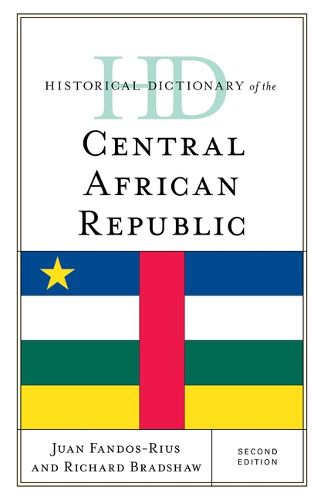Readings Newsletter
Become a Readings Member to make your shopping experience even easier.
Sign in or sign up for free!
You’re not far away from qualifying for FREE standard shipping within Australia
You’ve qualified for FREE standard shipping within Australia
The cart is loading…






The Central African Republic (CAR) joined the international community when it attained autonomy within the Communaute (French Community) on 1 December 1958. Under this arrangement, France retained control over defense, foreign affairs, currency, and home security. Through history, Central Africans, comprising a quite large number of different ethnic groups and subgroups, engaged in internal and external conflicts, leading to significant migrations that showcased the nation's current cultural diversity. In the twilight of the 19 century, Western influence arrived on the heels of French colonists, marking the end of slave trade from neighboring states to Central Africans but introducing new forms of servitude such as concessionary companies, portage, taxes, and compulsory labor. Central Africans saw their cultural systems and languages gradually erode, replaced by European educational models and Christianization. In less than 70 years, Central Africans experienced profound changes without a cohesive plan. As an independent nation, the CAR found itself grappling with Western nations contesting its natural resources, yielding little profit, and trapped in neocolonialism. The nation's limited income weakened its authority, leading to its disappearance in rural areas. Tensions over land resources escalated into a civil war, disguised and polarized under the guise of interreligious conflict. Today, Central Africans stand at a pivotal moment, seeking change for peace and recovery.
Historical Dictionary of the Central African Republic, Second Edition contains a chronology, an introduction, and an extensive bibliography. The dictionary section has more than 1,200 cross-referenced entries on important personalities as well as aspects of the country's politics, economy, foreign relations, religion, and culture. This book is an excellent resource for students, researchers, and anyone wanting to know more about the Central African Republic (CAR).
$9.00 standard shipping within Australia
FREE standard shipping within Australia for orders over $100.00
Express & International shipping calculated at checkout
The Central African Republic (CAR) joined the international community when it attained autonomy within the Communaute (French Community) on 1 December 1958. Under this arrangement, France retained control over defense, foreign affairs, currency, and home security. Through history, Central Africans, comprising a quite large number of different ethnic groups and subgroups, engaged in internal and external conflicts, leading to significant migrations that showcased the nation's current cultural diversity. In the twilight of the 19 century, Western influence arrived on the heels of French colonists, marking the end of slave trade from neighboring states to Central Africans but introducing new forms of servitude such as concessionary companies, portage, taxes, and compulsory labor. Central Africans saw their cultural systems and languages gradually erode, replaced by European educational models and Christianization. In less than 70 years, Central Africans experienced profound changes without a cohesive plan. As an independent nation, the CAR found itself grappling with Western nations contesting its natural resources, yielding little profit, and trapped in neocolonialism. The nation's limited income weakened its authority, leading to its disappearance in rural areas. Tensions over land resources escalated into a civil war, disguised and polarized under the guise of interreligious conflict. Today, Central Africans stand at a pivotal moment, seeking change for peace and recovery.
Historical Dictionary of the Central African Republic, Second Edition contains a chronology, an introduction, and an extensive bibliography. The dictionary section has more than 1,200 cross-referenced entries on important personalities as well as aspects of the country's politics, economy, foreign relations, religion, and culture. This book is an excellent resource for students, researchers, and anyone wanting to know more about the Central African Republic (CAR).